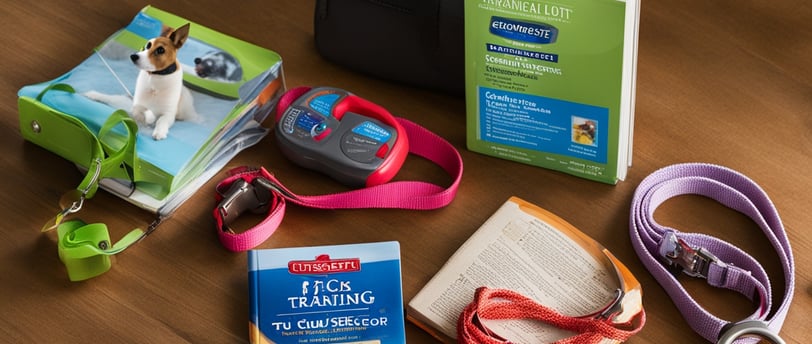Teaching Your Dog the Sit Command: A Guide
Learn how to teach the "sit command for dogs" quickly and effectively. This guide offers simple steps, expert tips, and proven techniques for training dogs of all ages. Discover how to use positive reinforcement and avoid common mistakes. Improve your dog's obedience and strengthen your bond today!
The Canine Chronicles
7/16/20246 min read


Are you ready to make your pup more well-behaved?
Learning the sit command is the first step towards basic obedience and a stronger bond.
With patience, consistency, and treats, your dog can learn this command quickly.
Say goodbye to leash pulling and hello to a calmer, more attentive friend.
Learning the sit command is crucial for dog obedience. It's a simple command every dog should know. It keeps them safe and under control in many situations. Whether you're greeting guests, walking, or need your dog to calm down, this command is essential. Plus, it's easy to teach with positive reinforcement.
Key Takeaways
The sit command is a fundamental part of basic dog obedience training
Teaching your dog to sit helps keep them safe and under control
Patience, consistency, and short training sessions are key to success
Positive reinforcement is a powerful dog training technique
Mastering the sit command strengthens the bond between you and your pup
The Importance of Teaching Your Dog to Sit
As a responsible dog owner, I know how vital it is to teach my dog basic commands. The sit command is one of the most important. By spending time and effort on teaching dogs to sit, I create a well-behaved and easy-to-manage pet. This command is key for canine behavior modification and lets my dog join in on various activities and meet new people.


Establishing Basic Obedience
Teaching my dog to sit on command helps me promote desired dog behaviors and improves our communication. By always rewarding my dog for sitting, I teach them that listening to me gets them treats, praise, and love. This training is the first step towards learning more commands and tricks, making it fun for both of us.
Keeping Your Dog Safe and Under Control
Teaching the sit command is key for my dog's safety and keeping them under control in different situations. When there are distractions or dangers, like a busy street or another dog, my dog sitting on command keeps them focused and stops bad behavior. Here are some situations where the sit command is very useful:
Stopping my dog from jumping on visitors or strangers
Keeping my dog calm and in place when opening the door
Controlling my dog during walks, especially when they see other dogs or distractions
Helping my dog wait patiently, like during meals or when I'm busy
The sit command is more than just a trick; it's a key part of making a dog well-behaved and obedient. By focusing on this training, I'm looking out for my dog's safety, our relationship, and our ability to enjoy life together.
In conclusion, teaching my dog to sit is a key part of being a responsible dog owner. It's the start of a lifetime of positive canine behavior modification, keeps my dog safe, and strengthens our connection. By putting time and effort into this training, I help my dog succeed and make our life together happier and more rewarding.
Preparing for Training
Before starting to teach your dog the sit command, make sure you're ready for success. Preparing well sets up a great learning environment and strengthens your bond with your dog. Let's look at the important steps for preparing for dog training.
Choosing the Right Training Environment
Choosing the best place for training is crucial. Pick a quiet spot with no distractions. A room in your home, a fenced backyard, or a quiet park corner works well. Make sure it's safe and free from things that could interrupt your training.


Gathering Necessary Supplies
Get all the important supplies ready before you start training. You'll need high-value treats to motivate and reward your dog. Choose treats that are small, soft, and easy to digest. Also, have a comfy spot for your dog to sit, like a bed or mat. If you're using a clicker, make sure it's easy to get to.
Setting Aside Dedicated Training Time
Consistency is key in dog training. Set aside time each day for training, 15 to 20 minutes. This helps your dog stay focused and interested. Pick a time when you can give your full attention. Training should be fun and rewarding for both of you, so stay patient and positive.
For senior dogs or those with health issues, think about their needs. Use a soft surface for them to sit on. Adjust your training to fit their abilities. Shorter sessions and more breaks might be needed to keep them comfortable.
Getting ready for training sets you and your dog up for success. With the right environment, supplies, and time, you're ready to learn the sit command and grow closer to your dog.
Step-by-Step Guide to Teaching the Sit Command for Dogs
Teaching your dog to sit is key to their training. It's fun and rewarding for both you and your dog. Use positive reinforcement and consistent practice to teach your dog the sit command. Let's go through the steps to train your dog to sit.
Getting Your Dog's Attention with a Treat
Start by holding a treat near your dog's nose to get their attention. Pick a treat they love, only for training. This makes them want to learn more. Keep the treat small to avoid overfeeding and keep their focus.
Luring Your Dog into the Sit Position
With your dog's attention, lift the treat over their head towards their rear. They'll follow the treat and sit down. Be patient and let them go at their pace. If they get distracted, start again. With time, they'll learn the sit motion.
Rewarding and Reinforcing the Sit Command
When your dog sits, mark the behavior with a clicker or a verbal marker. Then, give them a treat and lots of praise. This positive feedback makes them want to sit again and understand the command better.
Gradually Fading Out the Lure
As your dog gets better, start using an empty hand to guide them. Reward them with a treat from another hand. This teaches them to sit for the hand signal alone. Keep practicing until they do it well.
Introducing the Verbal Cue
When your dog knows the hand signal, add the verbal cue "sit." Say it clearly before the signal. Reward them when they sit. Repeat this often, focusing more on the word "sit" and less on the signal. Soon, they'll sit for just the word.
Follow these steps and use positive reinforcement to teach your dog to sit. Keep training fun, short, and rewarding. With patience and practice, you and your dog will get the sit command down in no time!
FAQ
How long does it typically take to teach a dog the sit command?
Teaching a dog to sit depends on their age, breed, and training background. With daily training of 15-20 minutes, most dogs learn the sit command in a week or two.
What are some common mistakes to avoid when teaching a dog to sit?
Avoid pushing the dog into the sitting position, using too much force, or not rewarding them fast enough. Use positive reinforcement, be patient, and keep training fun and short.
Can I teach an older dog the sit command?
Yes, older dogs can learn the sit command too. They might need more patience and consistency, but they can learn with positive reinforcement. Remember, older dogs might have physical limitations, so adjust your training to fit their needs.
What should I do if my dog doesn't follow the treat into the sitting position?
If your dog doesn't sit for the treat, try using a more tempting treat or one with a stronger smell. You can also guide their bottom down gently as you move the treat over their head. Be patient, as some dogs learn at their own pace.
How often should I practice the sit command with my dog?
Practice the sit command in short sessions, about 15-20 minutes, several times a day. Consistency is crucial. Include the sit command in your daily routine, like before meals, walks, or giving them attention.
Source Links
Thanks and best regards
The Canine Chronicles
Click the link below for a training guide for your pet!
This post may contain affiliate links. If you make a purchase through one of these links, we may earn a small commission at no additional cost to you. We only recommend products and services that we have personally used and believe will add value to our readers. Your support helps us continue to provide valuable content. Thank you for your support!
